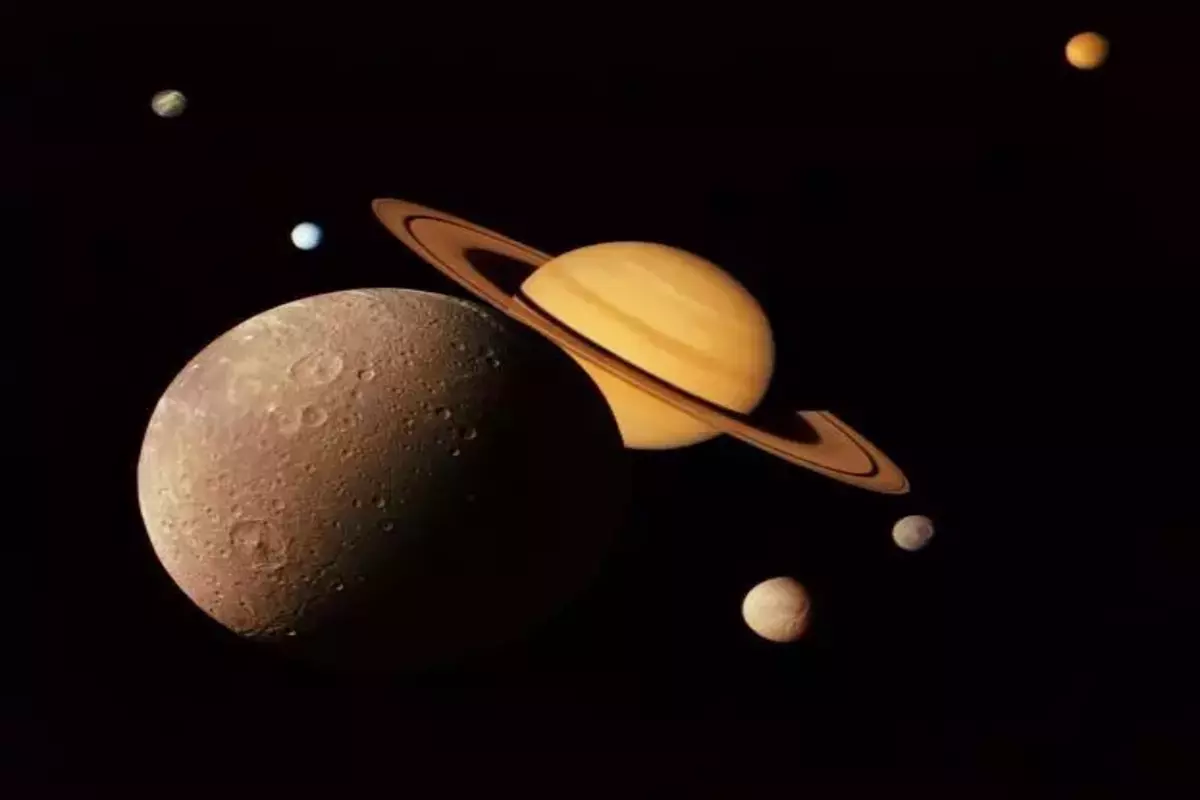
Saturn and its largest moons
NASA’s James Webb telescope, dubbed the ‘world’s most powerful telescope’, captured some amazing photographs of our universe, enthralling space aficionados.
The telescope has captured a magnificent image of Saturn’s famous rings. The rings of Saturn appear to glow ominously in this infrared view of Saturn, revealing intriguing patterns in its atmosphere.
“At the infrared wavelength observed by the telescope, Saturn appears extremely dark, as methane gas absorbs nearly all of the sunlight falling on the atmosphere. However, the icy rings remain relatively bright, leading to the unusual appearance of Saturn in the Webb image”, NASA explained.
NASA described the image on Instagram: “Two-part swipe through of a Webb image of Saturn, its rings and moons. The background is mostly dark. Saturn is seen as a dark orange-brown circle (split between the two images), surrounded by several blazing bright, thick, horizontal whiteish rings. There are three tiny dots on the left side of the first image. These are three of Saturn’s moons. From top to bottom, they are Dione, Enceladus, and Tethys, respectively. There is a slightly darker tint at the northern and southern poles of the planet. The rings surrounding Saturn are mostly broad, with a few singular narrow gaps between the broader rings. There is an innermost, thicker ring, and next to that is a brighter, wider ring. Traveling farther outward, there is a small dark gap before another thicker ring. In the thicker ring, there is a narrow faint band. There is then an outermost, faintest, thinnest ring.”
View this post on Instagram
James Webb’s telescope captured the image during a 20-hour observation of Saturn.
Several exceptionally long exposures of Saturn were included in the programme in order to test the telescope’s ability to detect faint moons orbiting the planet and its rings.
The space agency stated, “Any newly discovered moons might aid in the construction of a more complete picture of Saturn’s history and present systems”.
Enceladus, Dione, and Tethys, three of Saturn’s 145 known moons, are also included in the image.
According to NASA, there is also some unexpected detail in Saturn’s atmosphere. The planet’s atmosphere has never been seen with such clarity at a wavelength of 3.23 microns, which is unique to the Webb telescope.
Also read: Boat Service Between Sri Lanka And India To Be Delayed Further
To read more such news, download Bharat Express news apps


















